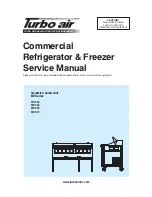
19
20
GB
GB
With this part instruction you can have the right way to storage your food. The
glass shelves and crisper can be removed to store food if needed.
Note: Food is not allowed to touch directly all surfaces inside the appliance. It has
to be wrapped separately in aluminum sheet or in cellophane sheet or in
airtight plastic boxes.
Storing food in the refrigerator compartment
The fridge freezer compartment helps to extend the storage times of fresh
perishable foods.Fresh food care for best results:
•Store foods that are very fresh and of good quality
.
•Ensure that food is well wrapped or covered before it is stor
ed. This will
prevent food from dehydrating, deteriorating in colour or losing taste and will
help maintain freshness. It will also prevent odour transfer. Vegetables and fruit
need not be wrapped if they are stored in the vegetable container of the
fridge compartment.
•Make sure that strong smelling foods are wrapped or covered a
nd stored
away from foods such as butter, milk and cream which can be t
ainted by
strong odours.
•Cool hot foods down before placing them in the fridge compart
ment.
Dairy foods and eggs
•Most pre-packed dairy foods have a recommended 'use b
y
/best before/best by/ date stamped on them. Store them in the fridge
compartment and use within the recommended time.
•Butter can become tainted by strong smelling food so it is be
st stored in a
sealed container.
•Eggs should be stored in the fridge compartment
.
Red meat
•Place fresh red meat on a plate and loosely cover with waxed
paper, plastic
wrap or foil.
•Store cooked and raw meat on separate plates. This will preve
nt any juice lost
from the raw meat from contaminating the cooked product
.
Poultr
y
•Fresh whole birds should be rinsed inside and out with cold r
unning water,
dried and placed on a plate. Cover loosely with plastic wrap
or foil.
•Poultry pieces should also be stored this way. Whole poultry
should never be
stuffed until just before cooking, otherwise food poisoning m
ay result.
Fish and seafood
•Whole fish and fillets should be used on the day of purchase.
Until required
,
r efrigerate on a plate loosely covered with plastic wrap, waxed paper or foil.
•If storing overnight or longer, take particular care to selec
t very fresh fish.
Whole fish should be rinsed in cold water to remove loose scales and dirt and
then patted dry with paper towels. Place whole fish or fillet
s in a sealed
plastic bag.
•Keep shellfish chilled at all times. Use within 1-2 days
.
Storage of foods
Storage of foods
Precooked foods and leftover
s
•These should be stored in suitable covered containers so that
the food will not dry out.
•Keep for only 1-2 days
.
•Reheat l
eftovers only once and until steaming hot.
Vegetable container
•The veg
etable container is the optimum storage location for fresh fruit a
nd vegetables.
•Take care not to store the following at temperatures of less
t
han 7°C for long periods:
Citrus fruit, melons, aborigines, pineapple, papaya, curettes,
passion fruit, cucumber,
peppers, tomatoes.
•Undesirable changes will occur at low temperatures such as so
ftening of the flesh,
browning and/or accelerated decaying.
•Do not r
efrigerate avocados (until they are ripe), bananas and mangoes.
Freezing and storing food in the freezer compartment
•To sto
r
e deep-frozen food
.
•To make ice cubes
.
•To freeze food
.
Note: Ensure that the freezer compartment door has been closed
properly.
Purchasing frozen foo
d
•Packaging must not be damaged
.
•Use by the 'use by /best before/best by/' date
.
•If possible, transport deep-frozen food in an insulated bag a
n
d place quickly in the
freezer compartment.
Storing frozen food
Store at -18°C or colder. Avoid opening the freezer compartm
ent door unnecessarily.
Food
Bu
tter, cheese
Upper door r
ack
Door r
ack
Cris
per
Upper area or door r
ack
Door r
ack
Lower area (lowest shelf
/ crisper cover)
Eggs
Fruit, vegetables, salad
Meat, saus
age, cheese, mi
lk
Dairy products, canned food, cans
Location
Drinks, b
ottles, tubes





































